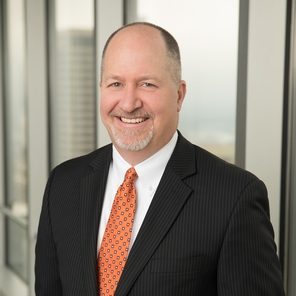
Section 469 and Material Participation
-
 Joel N. Crouch
Joel N. Crouch
View Bio
One of the tools in the IRS toolkit for limiting a taxpayer’s business and investment loss deductions is IRC Section 469 and material participation. In Gurpreet S. Padda and Pamela B. Kane v. Commissioner, the U.S. Tax Court held that a practicing medical doctor met the IRC Section 469 material participation requirements for five restaurants and a brewery, and could deduct the losses generated by those business in full.
Taxpayers are allowed deductions for certain business and investment expenses under IRC Sections 162 and 212. However, pursuant to IRS Sections 469(a)(1) and (d)(1) a taxpayer’s losses from passive activities can only be used to offset the taxpayer's income from passive activities. A passive activity is generally an activity involving the conduct of a trade or business in which the taxpayer does not materially participate. Generally, taxpayers materially participate in an activity if they are involved in the operations of the activity on a regular, continuous, and substantial basis. Material participation in an activity may be established by any reasonable means. “Reasonable means” includes the identification of services performed over a period of time and the approximate number of hours spent performing such services during such period, based on appointment books, calendars, or narrative summaries. Although daily time reports, logs, or similar documentation are not required, a taxpayer must provide other reasonable means to establish participation in the activity.
A taxpayer can establish material participation in an activity by satisfying any one of the following seven tests set forth in Section 1.469-5T(a):
- The individual participates in the activity for more than 500 hours during such year;
- The individual's participation in the activity for the taxable year constitutes substantially all of the participation in such activity of all individuals for such year;
- The individual participates in the activity for more than 100 hours during the taxable year, and such individual's participation in the activity for the taxable year is not less than the participation in the activity of any other individual for such year;
- The activity is a significant participation activity for the taxable year, and the individual's aggregate participation in all significant participation activities during such year exceeds 500 hours;
- The individual materially participated in the activity for any five taxable years during the ten taxable years that immediately precede the taxable year;
- The activity is a personal service activity and the individual materially participated in the activity for any three taxable years preceding the taxable year; or
- Based on all of the facts and circumstances, the individual participates in the activity on a regular, continuous, and substantial basis during such year.
In Padda, the taxpayer husband, Padda, was a practicing medical doctor who owned and operated two medical clinics and a medical billing service. In addition, Padda and his wife owned interests in five restaurants and a brewery. For each of the years 2010, 2011 and 2012 the taxpayers reported over $1,000,000 in nonpassive losses from the restaurants and brewery which they netted against their medical practice income. The IRS audited the taxpayers’ returns and issued a notice of deficiency that the losses from the restaurants and brewery were passive losses and could not be netted against the taxpayers’ nonpassive income. The taxpayers disagreed claiming that the aggregate participation by Padda and his wife exceeded 500 hours. The Tax Court held in the taxpayers’ favor because the taxpayers were able to establish that “the time spent by Padda on each of the six activities exceeded 100 hours for each year.” According to the court, “Padda presented testimony to establish his hours spent on the restaurant and the brewery activities. He personally testified for an entire day at trial, explaining in detail his nontravel involvement in each restaurant and the brewery. Padda stated the nontravel hours he spent working on the restaurants and the brewery each year.” In addition, 12 witnesses testified regarding Padda’s nontravel involvement in the restaurants and the brewery, and the taxpayers created detailed spreadsheets summarizing Padda’s travel time related to the restaurants and brewery activities.
For questions related to this or any other civil tax or criminal tax related matter, please feel free to contact Joel Crouch at (214) 749-2456 or jcrouch@meadowscollier.com.
